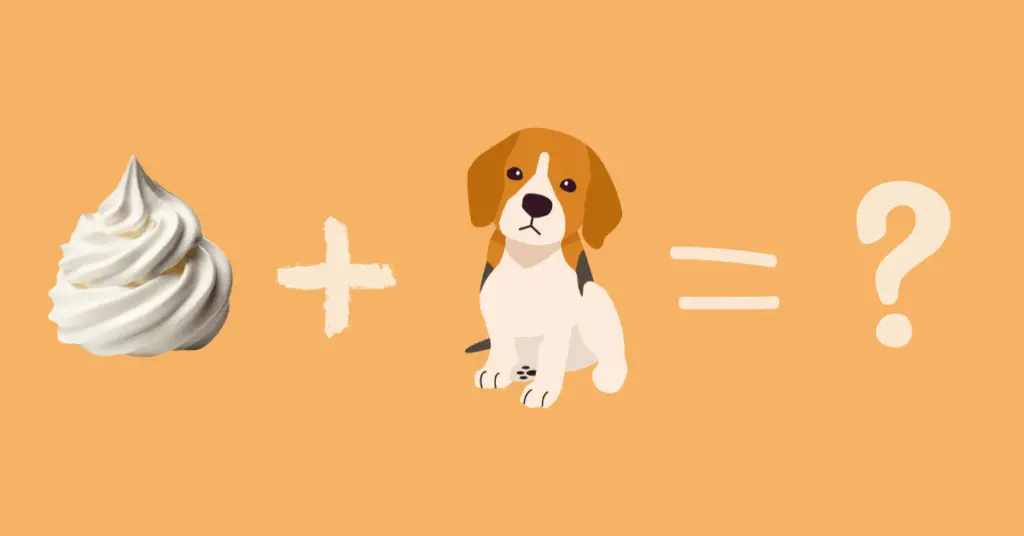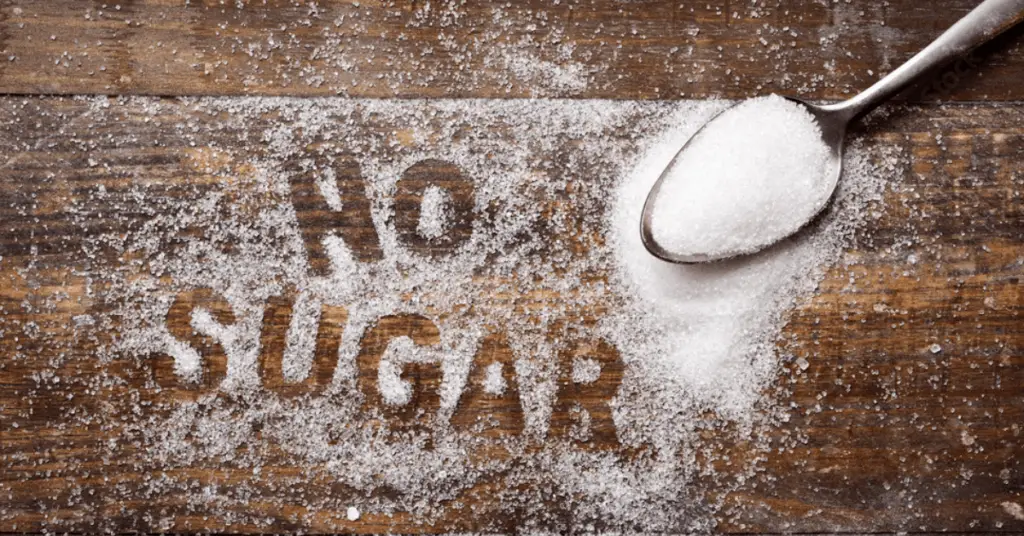
Hey there, fellow dog lovers and dessert enthusiasts! Today, we’re embarking on a delightful adventure to answer a question that often makes us tilt our heads in curiosity: Can dogs have icing? It’s a paw-some topic that we’re going to sniff out and dig into together. We want to ensure that our four-legged companions can safely enjoy a dollop of sweetness. So, let’s wag our way through this article and uncover the icing secrets for our beloved pooches!
A Pup’s Sweet Tooth: Fact or Fiction?
You might naturally wonder: Can dogs have icing? Well, let’s unravel this mystery! Dogs, just like humans, have taste buds and can certainly naturally detect sweet flavors. However, their taste for sweetness isn’t as pronounced as ours. This means they might not naturally have the same craving for sugary delights like icing as we do.
What is icing?
Icing, known as frosting as well, sweetens and often adds creaminess as a topping to decorate and enhance the taste of baked goods like cakes, cupcakes, cookies, and pastries. Typically, a mixture of sugar, butter, milk or cream, and other flavorings makes up this delightful addition. The primary purpose of icing is to add sweetness and texture to the baked item, transforming it into a visually appealing and delicious treat.
Is there any difference between icing and frosting?
Yes, although the terms are often used interchangeably, there is a difference between icing and frosting. The main distinctions lie in their ingredients, texture, and typical uses in baking.
Icing:

Icing, a broad term, encompasses a variety of sweet toppings used to decorate and enhance the flavor of baked goods. It’s a thin and glossy mixture typically made from powdered sugar (also known as confectioner’s sugar) and a liquid, such as water or milk. Often, people use icing for glazing pastries, cinnamon rolls, or drizzling over cookies. It sets and hardens as it dries, creating a smooth, shiny surface.
Frosting:
Frosting, on the other hand, is a thicker and creamier mixture compared to icing. It typically consists of powdered sugar, butter, and liquid (like milk or cream). A popular type of frosting, buttercream frosting, comes to life by creaming together butter and powdered sugar. People often spread or pipe frosting onto cakes and cupcakes to create a smooth, soft, and fluffy layer. It’s great for filling cake layers and for creating decorative swirls or rosettes.
In summary, icing is thinner, more transparent, and hardens when dried, while frosting is creamier, thicker, and remains soft. The choice between using icing or frosting depends on the desired texture, appearance, and purpose of the topping in the baked goods being prepared.
Nutritional contents of icing
| Nutrient | Amount per 100g |
| Calories | 410 kcal |
| Total Fat | 15 g |
| Saturated Fat | 4.5 g |
| Trans Fat | 0.1 g |
| Cholesterol | 10 mg |
| Sodium | 120 mg |
| Total Carbs | 68 g |
| Sugars | 65 g |
| Protein | 0.5 g |
Please note that the nutritional values are approximate and can vary based on the specific brand or recipe of icing. Always refer to the packaging or specific recipe for precise nutritional information.
Potential Risks of Icing for Dogs:
While it might be tempting to share some icing with your furry friend, especially when those puppy eyes are pleading for a taste, it’s important to be aware of the potential risks associated with giving icing to dogs. Now, can dogs have icing? That’s a question every responsible pet owner should consider before indulging their canine companion in this sugary delight.
High Sugar Content:

Icing, especially the type used for human consumption, is usually very high in sugar. Consuming too much sugar can lead to various health issues for dogs, including obesity, dental problems, and an increased risk of diabetes.
Digestive Upset:
Dogs have sensitive digestive systems, and consuming sugary or rich foods like icing can lead to gastrointestinal issues. It may cause upset stomach, diarrhea, or vomiting, which can be uncomfortable and harmful for your furry friend.
Caloric Intake:
Icing is calorie-dense due to its sugar and fat content. Feeding your dog icing regularly or in large amounts can contribute to excess caloric intake, potentially leading to unhealthy weight gain and related health problems.
Artificial Additives:
Many commercial icings contain artificial colors, preservatives, and other additives that are not ideal for canine consumption. Some of these additives may cause allergic reactions or other adverse effects in dogs.
Xylitol Poisoning:
Some human icings contain xylitol, a sweetener often used as a sugar substitute. Xylitol is highly toxic to dogs and can cause a rapid release of insulin, resulting in a dangerous drop in blood sugar levels (hypoglycemia). This can be life-threatening for dogs.
Dental Issues:
The high sugar content in icing can contribute to dental problems such as cavities and tooth decay in dogs. The sugar can promote the growth of harmful bacteria in the mouth, negatively impacting your dog’s oral health.
Can dogs have icing?
Now comes to big question “Can dogs have icing?” Regular icing meant for humans, frequently utilized to add sweetness to cakes and pastries, isn’t an ideal option for dogs. This is because of its elevated sugar levels and ingredients that might not suit their digestive system.Too much sugar can lead to potential health issues for dogs, including obesity, dental problems, and a spike in blood sugar levels. However, there are dog-friendly icing alternatives available that are specifically formulated to be safe for dogs. These versions typically use dog-friendly ingredients, avoiding harmful additives, making them a suitable treat option for dogs. So yes, dogs can have icing, but it should be offered responsibly and in a safe, dog-specific form.
How much amount of icing is safe for dogs?
The safe amount of icing for dogs depends on the dog’s size, overall health, and the specific ingredients in the icing. As a general guideline, it’s best to offer small quantities of dog-friendly icing as an occasional treat rather than a regular part of their diet. A thin layer or a small dollop is usually sufficient.
Creating a Tail-Wagging Treat: DIY Dog-Friendly Icing
Ingredients for DIY Dog-Friendly Icing:
- Ripe Banana: 1 medium-sized
- Peanut Butter (xylitol-free): 2-3 tablespoons
- Plain Yogurt (unsweetened): 2-3 tablespoons
Recipe:
Prepare the Banana:
Start by peeling and mashing a ripe banana in a mixing bowl. Make sure it’s ripe as it mashes more easily and adds natural sweetness to the icing.
Add Peanut Butter:
Incorporate 2-3 tablespoons of xylitol-free peanut butter into the mashed banana. Peanut butter not only enhances the flavor but also provides a smooth texture to the icing.
Mix in Plain Yogurt:
Introduce 2-3 tablespoons of plain, unsweetened yogurt into the banana and peanut butter mixture. Yogurt will give the icing a creamy consistency.
Blend Until Smooth:
Blend the ingredients together thoroughly until you achieve a smooth and creamy icing. You can adjust the quantities of peanut butter and yogurt to achieve the desired thickness.
Check the Consistency:
Ensure the icing is spreadable but not too runny. If needed, you can add a little more peanut butter or yogurt to adjust the thickness.
Serve or Store:
Once the dog-friendly icing is ready, you can either spread it on dog biscuits, drizzle it over dog treats, or let your pup enjoy it from a spoon. Store any leftover icing in an airtight container in the refrigerator for future use.
So, Creating this DIY dog-friendly icing is quick, simple, and a wonderful way to add a little sweetness to your pup’s day! Enjoy pampering your four-legged companion with this delicious, homemade delight. 🐾
Feeding Fido: The “Bone”-Appetit Moment
Picture this delightful scene: your pup, with a bit of icing on their nose, savoring a dog-safe treat. It’s a heartwarming moment. But always remember, introduce any new treat in moderation and monitor your dog’s reaction. We want their tails wagging with happiness, not any tummy troubles.
Conclusion
So, can dogs have icing? Absolutely! However, it’s all about making wise choices and offering them icing in a safe and controlled manner. Opt for dog-friendly versions or easily create your own. Let’s make sure our furry friends can indulge in a bit of sweetness, keeping their tails wagging and their health in top-notch shape. Here’s to happy tails and some icing joy for our dear furry companions! 🐾 Can dogs have icing? You bet they can!
